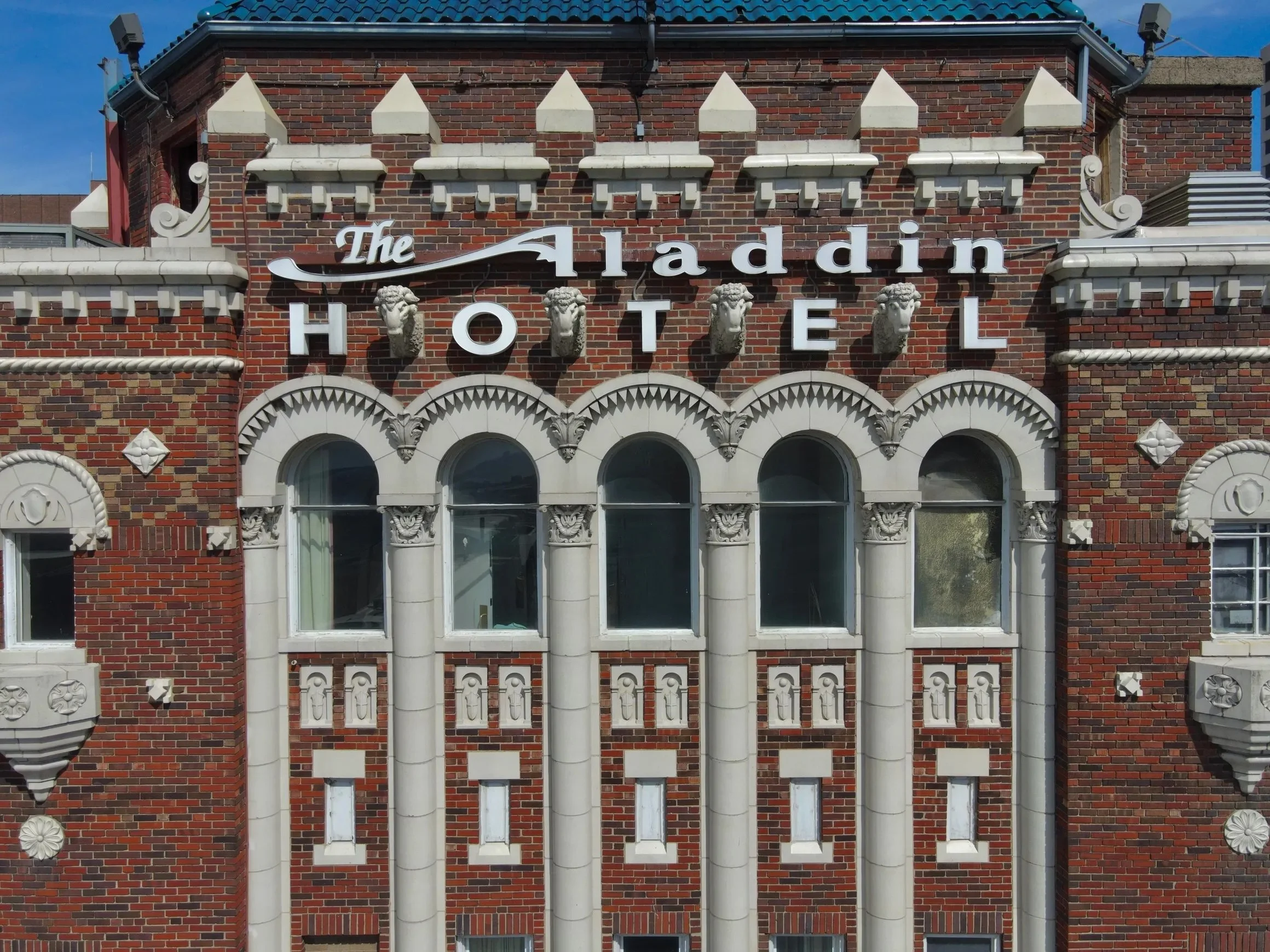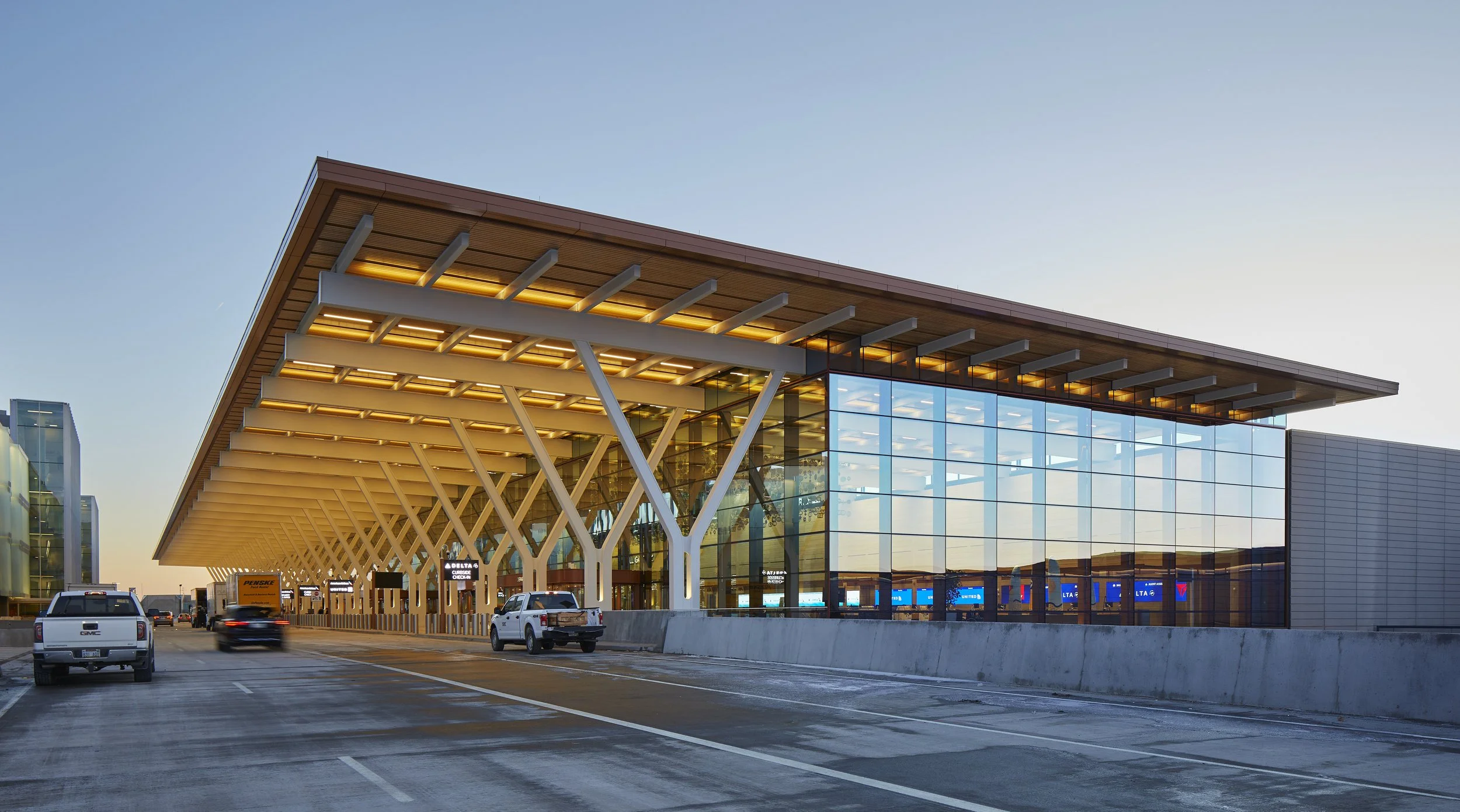Work on a transformative project that's been envisioned for Kansas City for 30 years or more will begin early next year.
"The South Loop Project is building a cap over I-670, which has long been the disdain of many leaders in the region, from the federal and state highway system, city leaders, and even to business owners and residents in the area. So, we are going to create a tunnel that will create a cap, and we are going to put a park on top of that cap," said Ann Holliday, VP of strategic initiatives at Downtown Council of Kansas City.
Panelists Tirzah Gregory, VP and group director at HNTB Corporation; Mark Neibling, AIA, associate principal, architecture at BNIM; and Mario Vasquez, assistant city manager and city planning director at City of Kansas City, Missouri, joined Holliday at a lunch event last week hosted by CREW KC. Meredith Hoenes, director of communications at Port KC, moderated.
Port KC, the Downtown Council, and the City of Kansas City are partners in the project.
"This is the biggest reclamation project that we have going on in the city. We're creating something out of nothing. Something that's been sort of a chasm Downtown. We're putting something there," said Vasquez.
Vasquez addressed why it has taken so long to start this project since it was first proposed in the 1990s. Back then, he said, not much was happening Downtown, and it was a struggle to put things together.
"Today, Downtown is dynamic. It makes sense now to build this amenity that can continue the momentum that we have Downtown," Vasquez said.
The first phase of the project involves constructing a tunnel through which traffic will flow. This project presents many challenges.
"At the end of the day, we are dealing with an infrastructure that is almost 60 years old and all that has to be replaced," said Vasquez.
According to Gregory, constructing a structure over a highway is like remodeling or adding onto an old house.
"You've got existing infrastructure to deal with, including some of the bridges that cross over the highway . . . so you can imagine the complexity of having some of
the old systems work with the new systems. . . . The structure is going to be carrying some heavy loads. . . . We have to build these foundations without impeding the right of way, making sure the highway stays at the same capacity that it is now," said Gregory.
One of the issues to solve is utilities. The Downtown area is riddled with utilities crossing every which direction, Gregory said.
"We are working with 15 different utility companies right now to coordinate. Some of them cross along Truman Road. Some of them cross over the highway. Some of them go under the highway, so that adds a lot complexity. They don't want any interruptions, of course, to the service that they provide," she said.
Another issue is drainage. The Downtown area slopes toward the planned park.
"A lot of the water coming across from Downtown goes at a low point across our park at Walnut Street. We have to make sure that we don't make anything worse," Gregory said.
There is a proposed rain garden to help collect some of the drainage, Hoenes said.
Above: Moderator Meredith Hoenes of Port KC next to the panelists at last week's CREW KC lunch event from left to right: Meredith Hoenes; Mario Vasquez; Ann Holliday, Tirzah Gregory; and Mark Neibling. Photo credit: Elizabeth (Liz) Wampler
The KC Streetcar is a consideration as well. The project must proceed with minimal impact on the streetcar service.
With respect to the tunnel itself, life safety systems will be crucial, including fire suppression, lighting, egress, ADA compliance and signage.
"That was kind of a new thing because we don't have tunnels around here," Gregory said.
Once the tunnel is complete, a park will be installed on top of it. OJB has been retained as the landscape architect.
Neibling said the park will feature a series of terraces "that are moments of art, areas of respite with this kind of welcoming approach from the west," and the buildings within the park will be responsive to the landscape.
According to Neibling, the design of buildings in the park will be focused on zero carbon. Plans include a food hall, a performance pavilion, a dog park and play areas.
"I look forward to when that space is so inviting and the whole community is down and enjoying it. They're sitting under these large trees. They're rolling in the grass. They're enjoying the environment in Downtown Kansas City," said Holliday.
The project will be a public-private partnership. According to Holliday, public monies to date include approximately $30 million in federal funds and $50 million in state funds. In addition, the City of Kansas City has committed $10 million and also is investigating a $65 million loan under the Transportation Infrastructure Finance and Innovation Act (TIFIA) and may apply for additional federal funds via grant projects. Approximately half of private sector funds' $50 million goal has been raised.
"We're talking to some other government entities in the area and working on some cost share arrangements with the Missouri Department of Transportation (MoDOT). . . . That's for funding for how we build it," Holliday said.
She said the city will own the park and plans to contract with a private, non-profit-based organization to manage it, similar to arrangements with the Kansas City Zoo & Aquarium and Starlight Theater.
"The goal then would be sponsorships, other philanthropy, revenue-generating opportunities within the park so that it would be self-funded for now and then capital endowments and things for maintenance in the future," Holliday said.
A general contractor has been selected, with details being finalized, and an announcement forthcoming next month, Vasquez said. Hoenes said the name of the project could be announced in January.
Vasquez said activity on the project will begin in the first quarter of 2025, and he expects to shut down I-670 mid-summer of 2025. He said the tunnel may be complete in 2027, but the contractor ultimately will address the timing issue. In addition, all construction activity in the public rights of way will cease on May 1, 2026, in preparation for the FIFA World Cup activities.
"So whatever work we can get done by that time is what's going to be done. Keep things open; diminish the disruption," Vasquez said.
"We're not going to hold a groundbreaking ceremony. We're going to hold a ground making ceremony, because that's what we're doing. We're making a whole new space," said Holliday.
Header image: A rendering of South Loop Park that will cap a four-block stretch of Interstate I-670 between downtown Kansas City and the Crossroads Arts District. Image credit: BNIM










